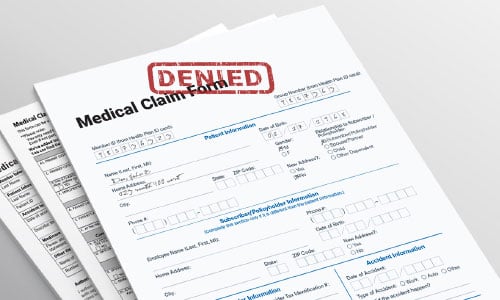Claim denial can prove a serious problem for healthcare providers and patients alike.
When your patients' insurance claims are denied, they may suddenly find themselves unable to pay for your services. This can leave you in a precarious financial situation while angering your clientele. If you're looking to decrease the number of denied claims in your medical office, here are five steps you can take to boost your approval rates and make life easier for your billing staff and patients.
1. Verify Insurance Information with Patients
Your patients may have filled out their insurance information in perfect detail once upon a time, but do those details still hold true? Old data can easily become incorrect data, which leads to filing errors and denied claims. Always check to make sure that your patient's information is 100 percent correct. At the same time, check to see whether your patient's insurance will actually cover every procedure you're recommending right from the start. If your patient is liable for X percentage of the payment, you don't want to wait until the claim is denied to make that clear.
2. Improve the Quality of EHR Notes
If you want to improve your number of clean claims, start by compiling accurate, understandable, complete notes in your EHR files. The more detail and accuracy your physician or dictationist includes in these records, the easier it is for coders to review those notes and code any applicable procedures or other work for each claim.
3. Audit Your Denials
It's not enough to accept the fact that claim denials happen; you must also know why they're happening. Make denial audits a part of your standard operating procedure. If you review and track your denials, you may be able to detect underlying common issues that are causing claims to get denied. Once you've spotted those recurring themes, you can address their root causes. For instance, you might discover that physicians are missing their claim filing deadlines -- a straightforward, fixable human error.
4. Train Your Staff
Have your audit findings revealed specific issues that need to be corrected? That's your cue to train your staff accordingly, making the necessary course corrections to eliminate faults in your administrative or record-keeping processes. Take the time to make sure all your staff members, from the receptionists to the physicians, are trained on how to code visits properly.
5. Stay on Top of Coding Regulations
The Evaluation and Management (E&M) coding guidelines for the healthcare industry have been confusing providers ever since they first came out in 1997. And just when you think you've figured them out, they change! Inaccurate coding not only contributes to high claim denial rates but can invite charges of fraud, even if the inaccuracy was nothing but an innocent error. That's why it's critical that you require your entire facility to keep an eye out for any and all coding changes in this complex area of healthcare administration.
You might be pleasantly surprised at just how many claim denials can be prevented simply by exercising the proper care and thoroughness in your own office practices. Take these five steps to heart and try them out for yourself. Your denial rates will drop, your approval rates will improve, and your patients will find it easier to pay for their care. If you're looking for additional improvements to your data collection and billing processes, contact to learn more about our range of EHR and practice management software.



